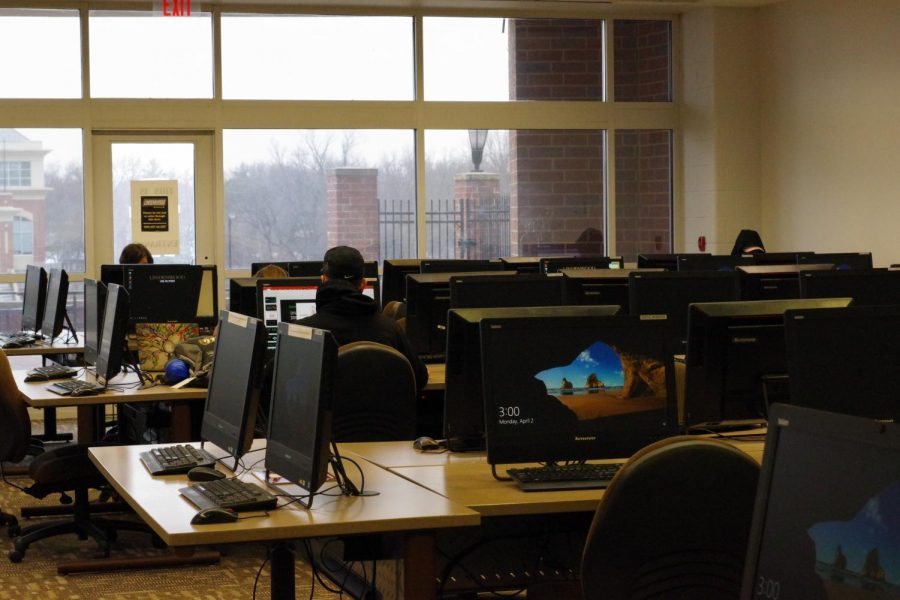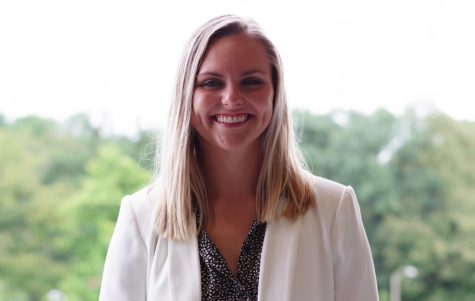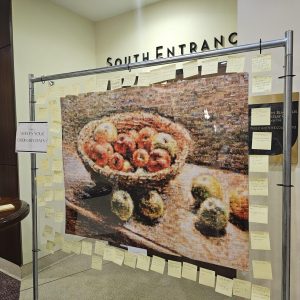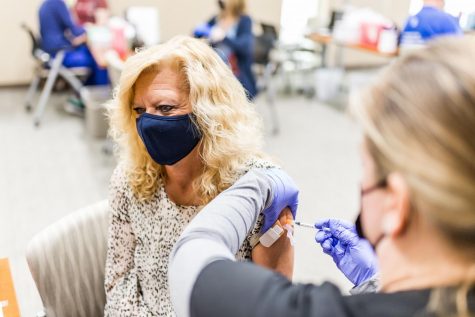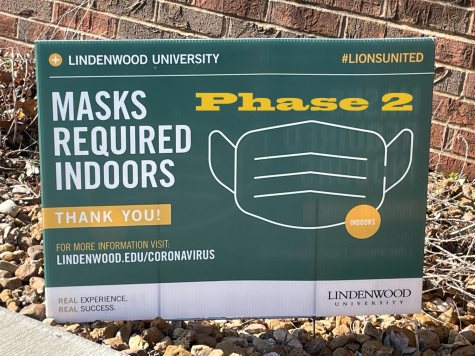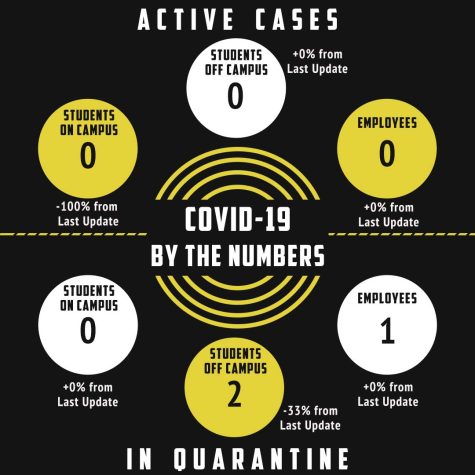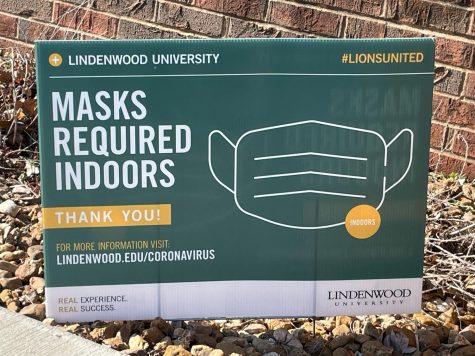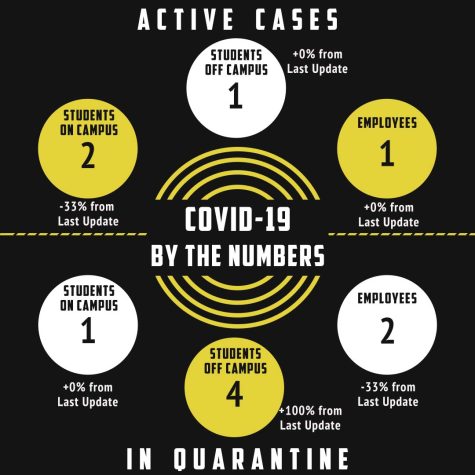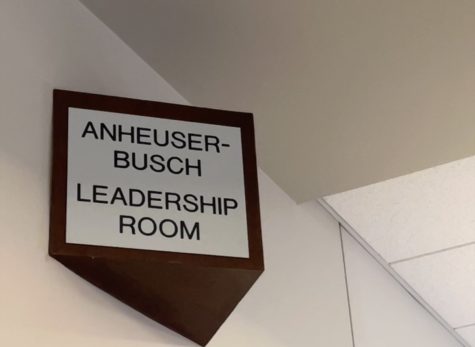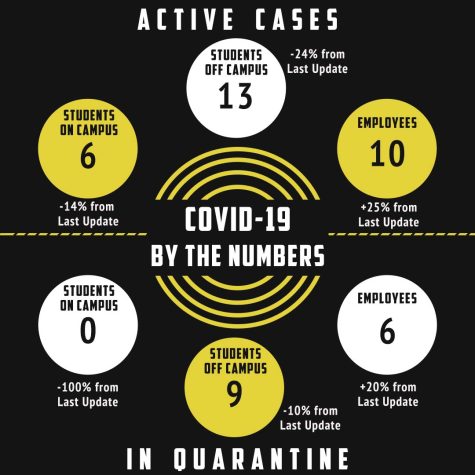Professors deal with obstacles to providing ‘real experience’ online during COVID-19
April 22, 2020
Studio art professor John Troy never expected his teaching supplies would include shaving cream, food coloring, and syrup. But he never expected to be teaching from home because of a pandemic either.
Nationwide stay-at-home orders prevent Troy from requiring students to buy materials, he said. Instead, he gave his students a hodgepodge list to make art with, including Elmer’s glue and spray paint.
Like Troy, students and faculty across the university have needed to overcome a unique set of challenges of online learning since Lindenwood University closed its campus over a month ago.
No beakers for labs. No ink for printmaking. No kids to student-teach. Just a laptop, the internet, and homemade ingenuity. So how are students and professors faring?
From theater to athletic training, professors and students have said the abrupt change has been hard to adjust to.
“It would be foolish to pretend that this is an ideal scenario and that we expect students to receive exactly the same quality or type of education they would have gotten if the term had finished as normal,” Associate Provost Erin Mann wrote in an email.
Mann said the provost’s office asked professors to be mindful of students in rural areas, international students, and family concerns.
Christie Rodgers, associate vice president of Student and Academic Support Services, said she has seen a significant increase compared to other semesters in faculty submitting risk alerts for students after campus closed, which warn academic services a student is missing assignments and not responding to the teacher anymore.
When hands-on takes a new meaning
Professors in science, art, and athletic training said one of the biggest hurdles is that students can’t use the equipment they would in the classroom.
Associate professor of athletic training Tim Godar said all health sciences classes have a clinical component to them, and before the pandemic, none of this practical training had been online.
“Students can video them demonstrating something like an exercise, but they can’t demonstrate how to use certain emergency care equipment that they don’t possess,” Godar said.
Instead of students diagnosing patient injuries in person, health sciences has resorted to telehealth.
“While it’s not the best-case scenario, because they can’t put their hands on the patient, they’re still having to go through the reasoning process,” Godar said.
Godar said his program is looking at shifting curriculum to later courses so students can still get hands-on experience. I came to Lindenwood for a reason, smaller class sizes, everything that Lindenwood sells, and now you rip that away from me, and now I’m stuck in front of a computer. — Scott Hasty, chemistry professor
In the School of Sciences, moving online has also made professors find creative ways to deliver classes to students. Associate chemistry professor Scott Hasty said before campus closed, he recorded all of his lab experiments online, so students could still see real-life examples.
“I’ve turned into basically a cinematographer and editor putting all the shots together,” he said. “They can at least observe what they would have done in the lab.”
Hasty said most of all, he misses his students.
“I came to Lindenwood for a reason, smaller class sizes, everything that Lindenwood sells, and now you rip that away from me, and now I’m stuck in front of a computer,” Hasty said. “At best, I get to see them through video. But when I get to lecture, I lecture to a screen. That to me is my hell.”
Jill Hutcheson, the associate dean in the School of Education, said the school has 75 classes in which students are placed in an educational setting to complete field experience requirements. In addition, 70 students this semester are student teaching.
Because all schools in Missouri are closed, student teaching, counseling field placements, and principal internships are now being completed through virtual applications such as Zoom, with their cooperating teachers, supervisors, or mentors. In other instances, students are watching videos of classrooms to identify how to manage classroom behavior and give feedback to students, Hutcheson said.
Discouraged in online settings
On the other hand, with commutes shortened from the highway to the stairs, professors and students are finding more opportunities to meet the particular needs of online education.
Troy, for one, said he has started grading students on ingenuity, like when one of his students created a stamp from a potato for printmaking. Before this semester, he never taught an online course, but he said his students might actually be learning more than the standard syllabus in a regular class setting.
However, Troy said while some students are enthusiastic to meet the challenge, others get frustrated and shut down. The advantage of art in person, Troy said, is that students can see him make mistakes too.
Theater student Abby Brisbane said heavily performance-based classes do not translate well online. This semester, she is in stage combat and theater makeup.
Usually, these classes depend on interaction with classmates and interactive critiques from professors.
“When it comes to the just online classes, and like, with the ones I’m taking, it’s gonna be really hard, and I’m honestly feeling pretty discouraged,” Brisbane said. “Like it might reach a point where I just want to throw in the towel.”
While students and faculty, like Brisbane, are disappointed the semester ended early, she recognized all colleges around the country are grappling with online education.
“The biggest thing we can do right now is just know that we all are feeling the same way, and maybe we can find solidarity in that,” Brisbane said.
A step ahead
Before campus closed, Lindenwood had guidelines and programs in place that some educators say made the university a step ahead in the online transition.
Since 2016, Lindenwood has required all professors to abide by minimum use standards for Canvas, the school’s learning management system. Each class shell needs to have its syllabus, all assignments listed, a running grade book, and all non-copyrighted documents needed.
Associate provost Mann said it is common for universities to require minimum use for online courses, but less so for in-person classes.
“We know there are other universities, some even in our region, where having a shell is usually at the complete discretion of the faculty member, and when they moved online, there was an IT snarl before they could even get started,” she wrote in an email.
At Lindenwood, faculty who stuck to the old-school, paper-handout teaching had to quickly adapt, but at least they did not have to learn Canvas from scratch.
Lindenwood also changed some policies because of the switch to online classes. The deadline for students who have an incomplete grade from Fall 2019 has also been extended until December 2020.
But unlike some universities, Lindenwood chose to not have pass/fail grades this semester. The provost’s office gave three reasons for doing so: it would complicate transferring classes to another school, graduate schools require letter grades for certain classes, and students on academic probation could have their financial aid status or student-athlete eligibility impacted.
Troy said he is happy the university did not go to a pass/fail system because that would demotivate students.
“A lot of my students are learning more because of the ingenuity that they have to share,” Troy said. “I keep reminding them, we got to finish strong this semester.”



